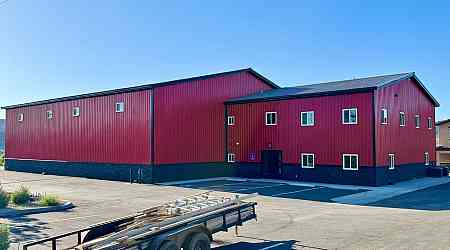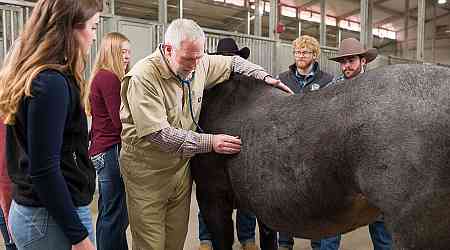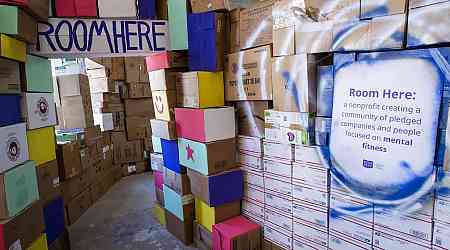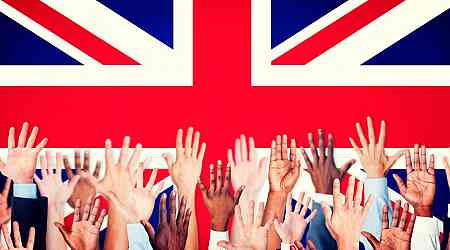Plans to remove and partially preserve a controversial monument on Brigham Young University-Hawaii’s campus have divided members of the Latter-day Saint enclave of Laie along Oahu’s North Shore.
The conflict, split roughly along generational lines, echoes those playing out across the United States over the stories communities tell about their past and the symbols they use to remember it.
At the center of this particular debate: a mosaic depicting a moment in then-apostle David O. McKay’s 1921 visit to the island. McKay stands surrounded by local Polynesian children saluting the American flag draped in his arms.
McKay would later serve as president of the church for 19 years. He said that at this event, a flag-raising at the school, he had a vision of what would eventually become BYU-Hawaii.
Since 1958, the larger-than-life artwork has greeted visitors to the campus’s main entrance in a building that also bears McKay’s name. Now, plans approved by the school’s board of trustees call for its removal, along with the demolition of the building itself and surrounding structures also completed in 1958, collectively known as the “McKay Complex.” The aim is to make way for new construction.
“The current McKay buildings have significant structural issues,” Laura Tevaga, a spokesperson for the school, explained in a statement. Swapping them out not only costs less, she said, but also “makes it possible to operate campus while replacing nearly half of all the academic space” in a process projected to take more than seven years.
As for the mosaic, the “costs of keeping” the piece of art “as is, fully intact,” Tevaga said, “are too high and have a negative impact on the university’s future.”
She added that the campus’s future welcome center will feature “significant” portions of the mosaic, including McKay holding the American flag, the Laie Hawaii Temple and the schoolchildren gathered at the flag-raising ceremony.
‘We are erasing an entire legacy’
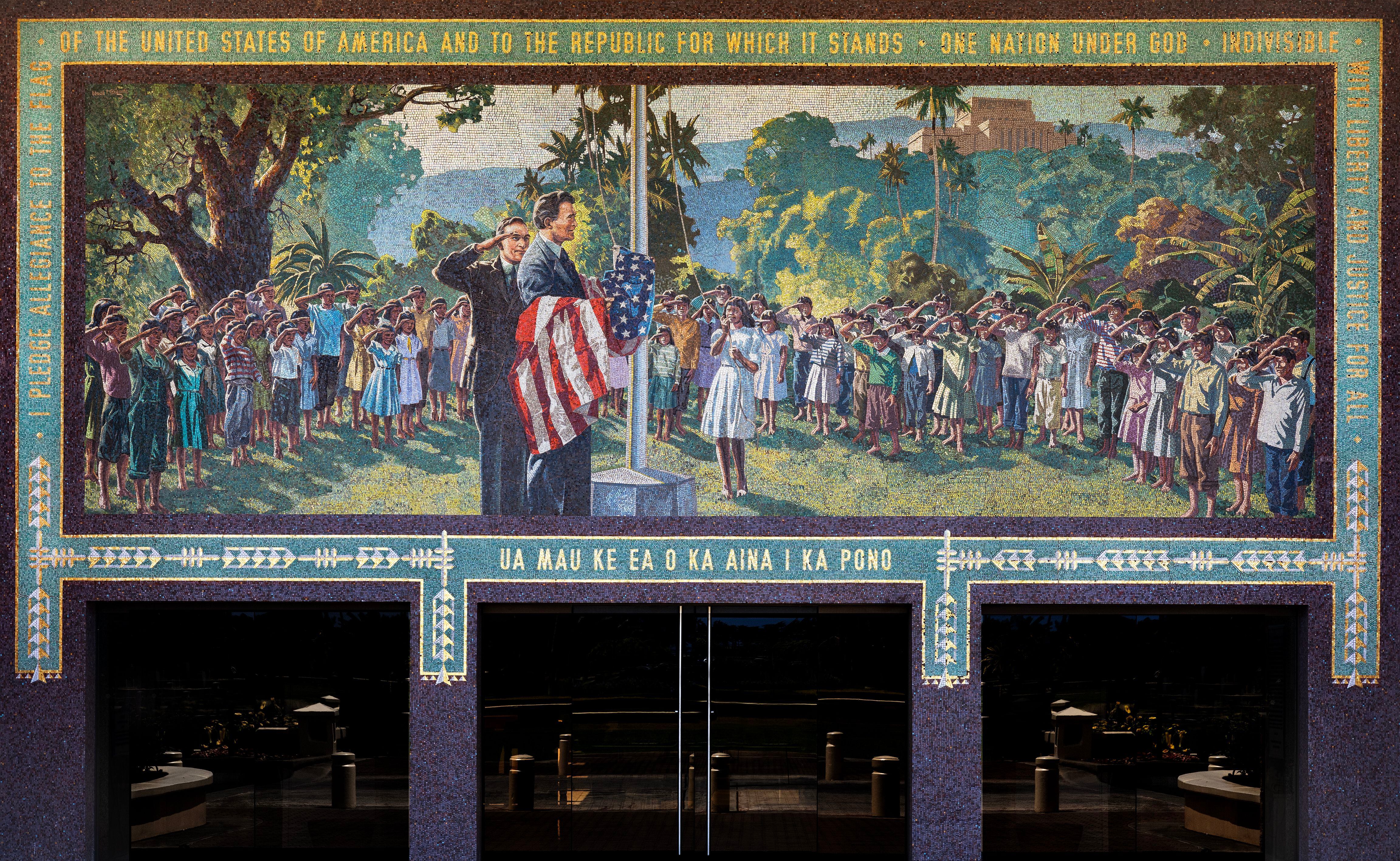
That isn’t good enough for Frank Magalei Dela Rosa.
“Sure,” he said, “take the Statue of Liberty torch and put it in a museum.”
Before the Polynesian Cultural Center, with its busloads of tourists, and before Brigham Young University-Hawaii and its thousands of students, there was Dela Rosa and his friends.
The native Hawaiian, born in 1950, can still remember playing in the natural springs and sugar cane fields that abounded in Laie, the town where BYU-Hawaii sits, back when the McKay Complex was being built.
“We could drink right out of those springs,” Dela Rosa said, pausing at times as if reliving the Edenic childhood memories. “They were that pure.”
Rather than resenting the development that has transformed his home, Dela Rosa, a veteran who moved to Orem in 2016, looks upon the growth of Laie with pride. For the devout Latter-day Saint, the school and all the changes it brought with it represent the realization of McKay’s vision — one his parents’ and grandparents’ generations worked and sacrificed to bring about.
Labor missionaries, young people (primarily men) called by church leaders in the mid-20th century to perform manual labor, built the McKay Complex. Among them was Dela Rosa’s uncle, who, he said, died after sustaining an injury on the job.
To his mind, the mosaic and the building where it’s housed stand in tribute to those who constructed them, and to tear them down is to erase their stories and memory.
“It’s not that we’re fighting the building or the improvement of BYU-Hawaii and its facilities,” he said. “It’s the destruction and the erasure of that monument itself that means so much to us.”
Verla Pualoa Moore, an eighth-generation resident of Laie born in 1956, agreed.
“[Previous generations] got behind [McKay’s vision] and gave it their all,” the veteran and Latter-day Saint said. “When they were asked to do things, they did it. And they gave 100% of everything they had.”
To Moore, the mosaic “represents all the labor, the work, the heart that was put into that,” as well as a “bridge” between past and future generations.
Remove it, “and we are erasing an entire legacy” as well as a reminder of “who our ancestors are.”
Reasons for demolishing
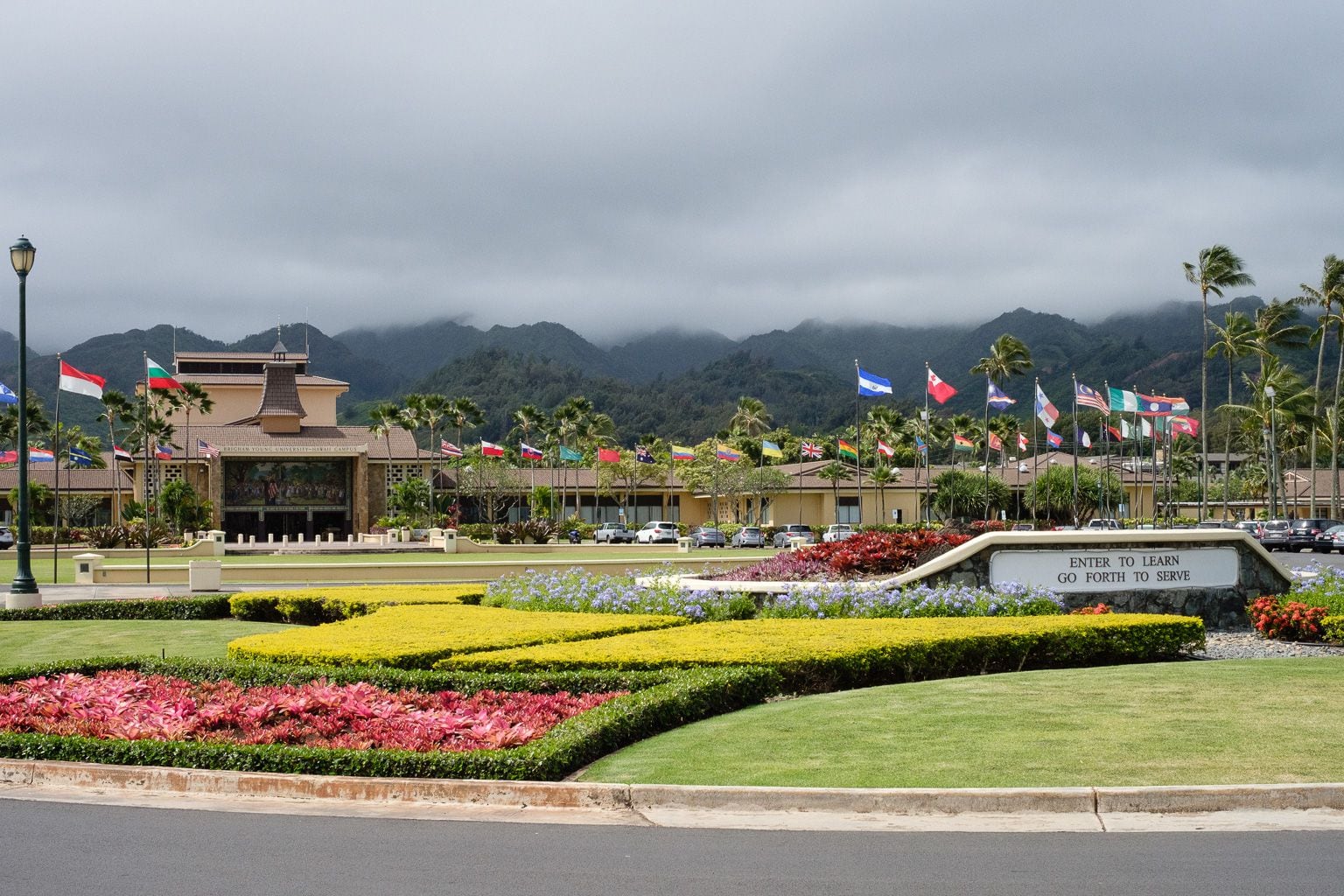
Sharon Nagata, born in 1946, can still remember helping to hold aloft a long celebratory lei the day McKay came back to town in 1955 to dedicate what was then known as the Church College of Hawaii. Nagata, now a resident of Taylorsville, said she “hate[s] to see it destroyed for the reasons” she learned “through the grapevine.”
She said the word on the street is that key BYU-Hawaii officials want the mosaic gone because they believe it “represents colonialism in Hawaii” and is “demeaning to the Polynesian people.”
That notion, she said, “had never entered my mind.”
Dela Rosa and Moore have also heard this explanation, which they also suspect is the primary driver behind the plans.
At first, Moore explained, the school’s administration said preserving the mosaic would cost too much, so she teamed up with others and raised $15 million to try to save it. Instead of welcoming the support, she said, administrators ticked off other reasons they couldn’t save it.
“Every time we came up with a remedy for a concern, the goal post moved,” she said, stressing that her and Dela Rosa’s frustration is with the school’s leadership and not the church’s.
Like Nagata, Moore and Dela Rosa have heard the rumor that the school’s higher-ups bristle at the imagery of shoeless Polynesian children standing around a white man and saluting the American flag.
“We never have looked at that mosaic in those terms,” Moore said, referring to the community of Laie as a whole. “That never occurred to anybody here.”
The exceptions, she explained, are a handful of members of “this younger generation that opposes pretty much everything” and “who think they know everything.”
‘The truth needs to be taught’
If there is one point on which Nakia Naeole agrees with “Auntie Verla” and “Uncle Frank” (he is related to both either through blood or marriage), it’s that there is a generational element to this debate.
There are some “historical truths that have finally been taught,” according to the 2014 graduate of BYU-Hawaii, that have shifted conversations around patriotism and representation of native people for younger community members.
“For a lot of us today,” he said, “the imagery of our forebears saluting the American flag only serves to teach miseducation to our youth today.”
BYU-Hawaii professor Mason Allred acknowledged this tension, saying the mosaic “captures some known features of that moment and takes license with others.”
For those familiar with the larger narrative around the flag-raising and accompanying vision, he added, the image can feel a bit lopsided, “ignor[ing] the additional part where McKay saw the Latter-day Saints of diverse cultures worshiping together in harmony.”
Both Naeole and Keali’i Haverly, a BYU-Hawaii alumnus born in 1974, said they supported the school’s plans to erect a new welcome center committed to preserving parts of the mosaic while also telling a broader story of the community’s history.
“I love the new renderings of the center,” Haverly said, noting that McKay’s vision is just “one of many amazing experiences in the community” — a community, he stressed, that predates BYU-Hawaii.
Ultimately, Naeole, who runs a nonprofit directed at improving local men’s health through “intergenerational traditions,” emphasized that he is not in the business of “toppling statues or destroying monikers.”
“But,” he said, “the truth needs to be taught.”
Naeole and Haverly, who works at the Polynesian Cultural Center, both also stressed that, contrary to Moore’s characterization of a community up in arms, most people they interact with don’t seem all that invested in the conversation about the mosaic’s fate.
Whether at church or at work, “it’s not an issue that comes up.”
Allred agreed.
“It’s my sense,” Allred said, “that much of the community sees the board-approved preservation effort as a measured solution that balances honoring the past with stewardship to the future.”
A work in progress
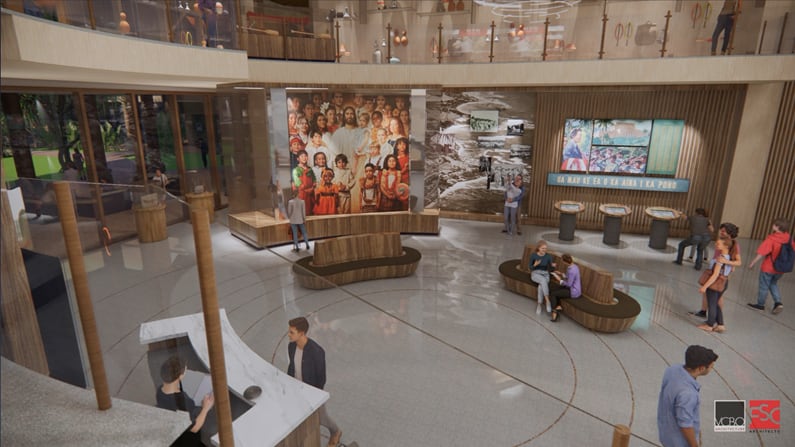
To date, the school has had more than 50 meetings with students, faculty, staff and community members as part of the review and design process of the new McKay Complex.
“Each of those meetings,” said Tevaga, the school’s spokesperson, “has helped to refine the design.”
The current design aims to incorporate “several native Hawaiian design themes.”
Community members with feedback or with specific stories they want represented in the new welcome center can email the school at new.mckay@byuh.edu.
Editor’s note • This story is available to Salt Lake Tribune subscribers only. Thank you for supporting local journalism.





















